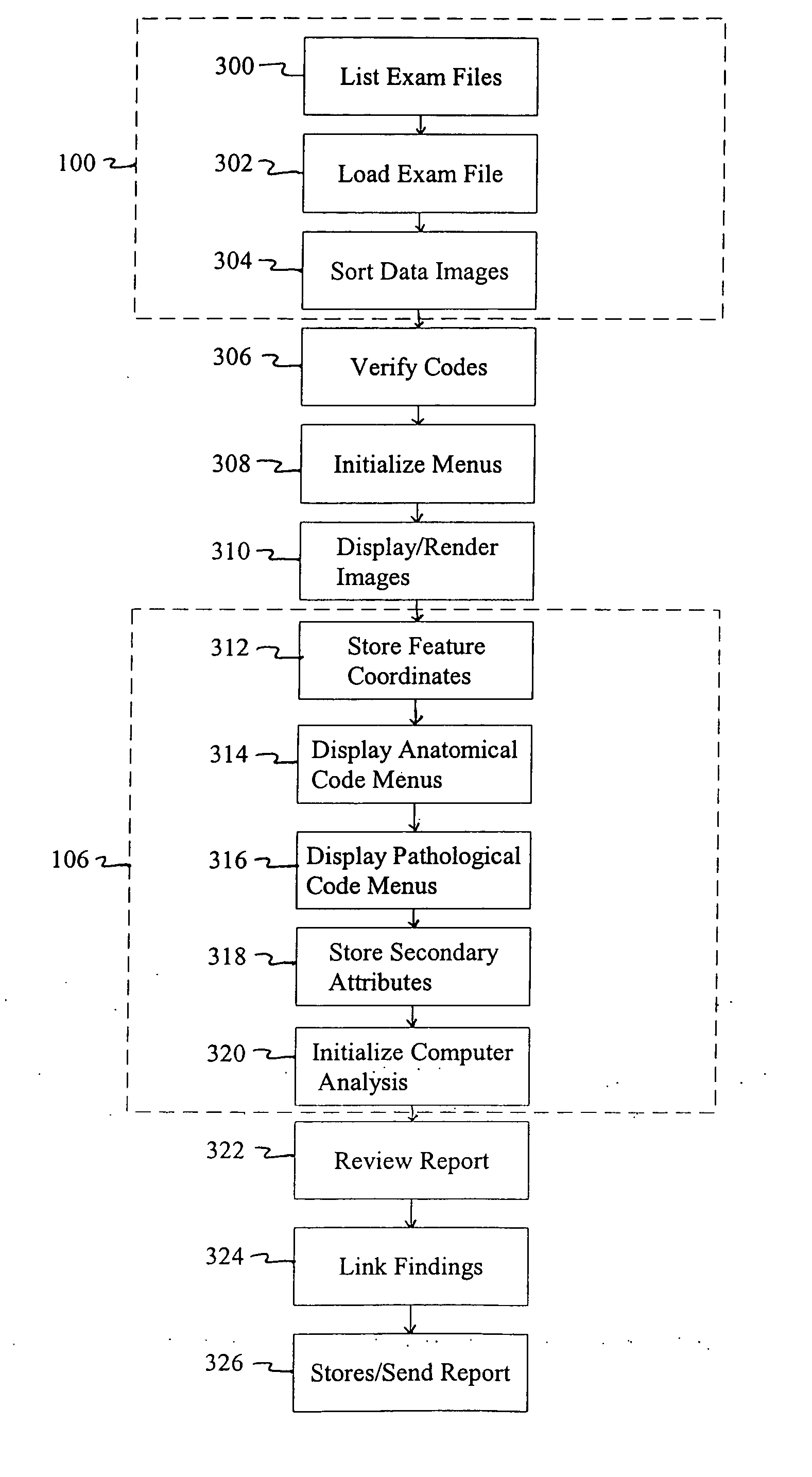Image reporting method and system
a reporting method and image technology, applied in the field of image reporting methods and systems, can solve the problems of lack of standardization, consistency, accountability, efficiency, and lack of standardized methods in the way in which reports are generated, and achieve the effects of efficient and systematic generation of radiology reports, facilitating data entry into searchable databases, and accelerating hospital billing and collection
- Summary
- Abstract
- Description
- Claims
- Application Information
AI Technical Summary
Benefits of technology
Problems solved by technology
Method used
Image
Examples
Embodiment Construction
[0018] A method and system are provided for generating and communicating reports containing an expert's analysis of image data as generally depicted in FIGS. 1 and 2. In addition, a computer-implemented method and a computer system function to create a database of the expert's findings from which a report is generated and from which data mining and other analyses may be conducted. The database can be a computer searchable database and may be a relational computer database.
[0019] The method and system of the present invention are applicable to any field which relates to an expert's analysis of images. In particular, however, the method and system of the present invention are well-suited to image analysis found in medical applications. As such, the method and system of the present invention are illustrated in the accompanying figures and description in terms of the medical field of radiology.
[0020] The method and system are particularly well-suited to the analysis of digital images....
PUM
| Property | Measurement | Unit |
|---|---|---|
| opacity | aaaaa | aaaaa |
| volume | aaaaa | aaaaa |
| surface rendering | aaaaa | aaaaa |
Abstract
Description
Claims
Application Information
 Login to View More
Login to View More - R&D
- Intellectual Property
- Life Sciences
- Materials
- Tech Scout
- Unparalleled Data Quality
- Higher Quality Content
- 60% Fewer Hallucinations
Browse by: Latest US Patents, China's latest patents, Technical Efficacy Thesaurus, Application Domain, Technology Topic, Popular Technical Reports.
© 2025 PatSnap. All rights reserved.Legal|Privacy policy|Modern Slavery Act Transparency Statement|Sitemap|About US| Contact US: help@patsnap.com



